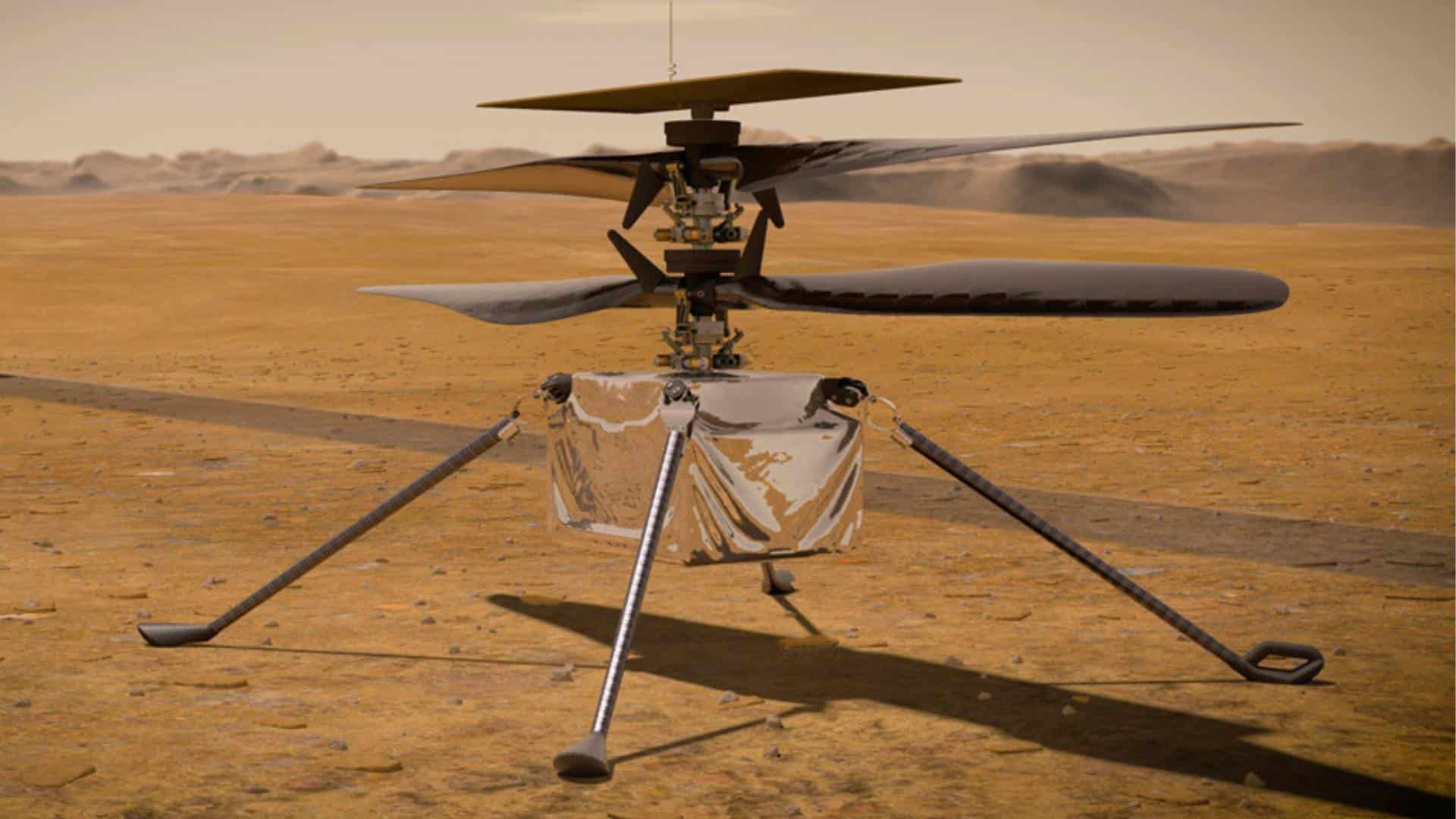The little space copter that could finally puttered out. But our hopes for stepping on Martian soil? That keeps chugging along.

An illustration of NASA’s Ingenuity Mars Helicopter stands on the Red Planet’s surface. (Credit: NASA/JPL-Caltech)
Editor’s note: On 25 January 2024, NASA announced that Ingenuity — a helicopter that landed on the planet Mars with the rover Perseverance on 18 February 2021 — has sputtered out and cannot be revived. The folks at NASA tell us that Ingenuity was only meant to fly five times over a month-long period, but it ended up taking off 72 times over three years.
If you are an avid reader of News Decoder, you will know that we are a little obsessed here with the border-less world of outer space. So in commemoration of Ingenuity’s remarkable life, we decided to republish an article by correspondent Tira Shubart that we first ran shortly after Perseverance landed with Ingenuity on its belly. It explores what our efforts to reach and explore Mars tells us about our own humanity.
We launched Decoder Replay to help readers better understand current world events by seeing how our correspondents decoded similar events in the past.
How many spacecraft heading to the same planet make a traffic jam? The three missions that were launched to Mars in July 2020 certainly created an interplanetary rush hour.
It’s only possible to launch a mission to Mars every 26 months, when the Earth and Mars are favourably aligned.
Mars is a demanding destination. Of the almost 50 missions to Mars since the 1960s, more than half have failed — which meant celebrations for the three safe arrivals.
The first success of 2021 was Al-Amal — meaning Hope — on February 9, sent by the United Arab Emirates. Al-Amal will orbit the red planet, send back images and measure the atmosphere. A day later, Al-Amal was joined by a Chinese spacecraft, Tiawen-1, which will orbit for three months before attempting a landing on Mars.
The most ambitious Mars mission to date, Perseverance, touched down on February 18. The rover landing depended on outlandish technology, a “skycrane” that even JPL, a part of the U.S. National Aeronautics and Space Administration (NASA), dubbed “the right kind of crazy.”
It worked, slamming on the brakes from a speed of 12,000 miles per hour and entering the Martian atmosphere for a perfect touchdown.
Did life once exist on Mars?
Why should young people care about the missions to Mars?
“Because Mars is only going to become important in the future, both as a place of scientific discovery and as a place of human exploration,” said Dr. Stuart Clark, an astronomy journalist, Fellow of the Royal Astronomical Society and a former Vice Chair of the Association of British Science Writers.
“The search for life on Mars is fundamental to our quest to understand our place in the Universe. Did life begin on Mars too? Could we one day live on Mars?” Clark said. “These are the questions that previous generations of humans have been able to ask, but only the current generation of young people stand a real chance of answering.”
JPL, which stands for the Jet Propulsion Lab in California, has been known for its maverick spirit since its founding in the 1930s. And the scientists and engineers at JPL — who say they strive for the impossible — love puzzles.
“Curiosity,” the NASA rover from JPL that has been exploring Mars since 2012, carries a signature flourish, literally. Curiosity’s wheels have been leaving tracks spelling “JPL” in Morse code across the Martian surface for nearly a decade.
Will humankind one day inhabit Mars?
Perseverance carried a puzzle to the red planet on its enormous parachute. Only a handful of people knew about the hidden message until a hint was dropped at the post-landing press conference. Space sleuths set to work.
Within hours, the JPL motto “Dare Mighty Things” was deciphered in binary code on the parachute’s panels alongside the GPS coordinates for JPL.
Will there be more surprises to discover? Hopefully they will come from Perseverance’s discoveries on Mars as it explores Jezero Crater, a dried lake bed. Could fossil evidence reveal that life did exist in the ancient past before the atmosphere on Mars was blown away by solar winds?
Mars used to have lakes and seas. Scientists believe water can make a planet habitable — so long as there is also organic material, a heat source and time.
Humans on Mars would be difficult.
Intriguingly, some scientists believe that other planets could have “seeded” life on Earth. If that life started on Mars and travelled to Earth on comets or asteroids, that would mean that Martians do exist — as us.
Now the only known inhabitants of Mars are robots. And each one has a Twitter account that tweeted many greetings during February. The orbiting satellites make it all possible, reminds JPL chief engineer Justin Maki.
“When you see a beautiful image from Jezero, consider that it took a whole team of Martians to get it to you,” Maki said. Every picture from Perseverance is relayed by either the European Space Agency’s Trace Gas Orbiter, or one of three NASA spacecraft — MAVEN, Mars Odyssey or Mars Reconnaissance Orbiter.
Will those satellites someday relay messages from human visitors? Astronauts would need to endure an eight-month journey from Earth and then months on Mars until the next launch window, meaning a mission of at least two and half years. No human has ever spent that much time in micro gravity, which is debilitating to our bodies.
Elon Musk, the founder of Space X, aims to send humans to Mars in the next five years. NASA is more conservative and targets a manned mission in the late 2030s. But the logistical challenges of sufficient air, water, food and fuel for the roundtrip journey are huge.
Hopefully there will be some cargo space for a few puzzles to intrigue future travellers.
Three questions to consider:
- How would the discovery of organic life on Mars affect humankind?
- Should humans travel to Mars to colonise the red planet — as well as explore?
- What hidden puzzle would you design for a Mars mission?

Tira Shubart is a freelance journalist and media trainer based in London. She has produced television news and trained journalists across four continents for international broadcasters, including BBC News, Canadian Broadcasting Corporation and Al Jazeera, over several decades.
Read more News Decoder stories about outer space:
